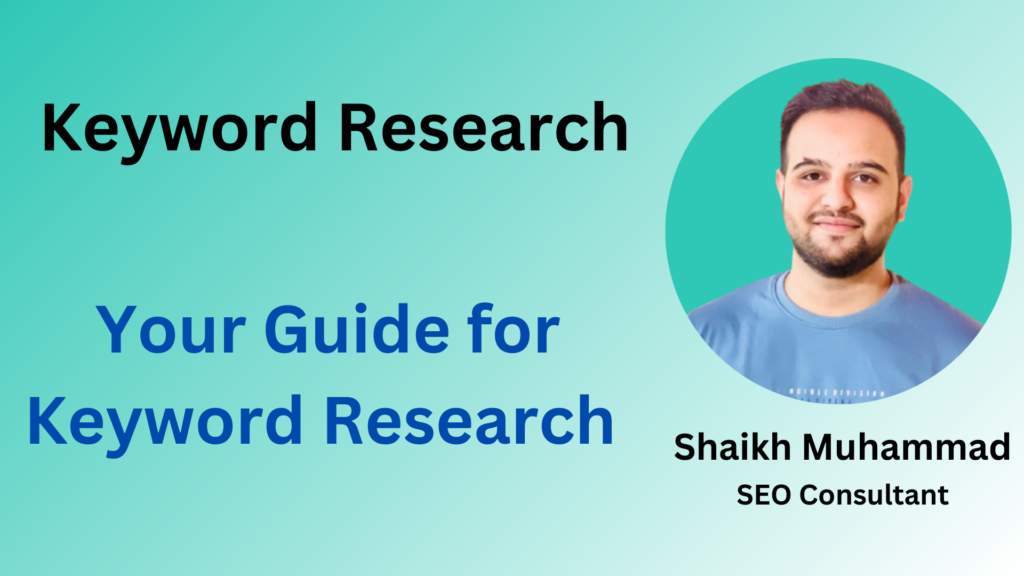Understanding Search Intent: What Do Your Customers Really Want?

The Fundamentals of User Search Behavior
What Is Search Intent?
Search intent represents the underlying purpose behind a user’s online query. It goes beyond simple keywords, diving into the psychological motivations that drive people to seek information. Understanding search intent is like decoding a digital conversation, where users communicate their needs through carefully crafted search queries.
Key components of search intent:
- Explicit user objectives
- Contextual information
- Underlying user motivation
- Potential action expectations
The Psychology Behind Search Queries
Search queries are more than just text input; they are windows into human cognitive processes. Users approach search engines with specific mental models, seeking solutions, information, or experiences that address their immediate needs. The psychology of search involves understanding the emotional and rational drivers that prompt individuals to seek online information.
Psychological search drivers:
- Problem-solving motivation
- Curiosity exploration
- Decision-making support
- Emotional validation
How Search Engines Interpret User Goals
Modern search engines have evolved from simple keyword matching to sophisticated intent interpretation systems. They analyze multiple signals to understand the deeper meaning behind search queries, using advanced algorithms that consider context, user history, and broader search patterns.
Search engine interpretation methods:
- Semantic analysis
- User behavior tracking
- Machine learning algorithms
- Contextual understanding
Types of Search Intent Patterns
Navigational Search Behavior
Navigational searches represent users seeking a specific website or online destination. These queries demonstrate clear intentionality, where users already know their desired digital location and use search engines as a navigation tool.
Navigational search characteristics:
- Direct brand or website queries
- Precise destination targeting
- Minimal exploration intent
- Quick access motivation
Informational Query Patterns
Informational searches reflect users’ desire to learn, understand, or explore a specific topic. These queries are driven by curiosity, research needs, or the pursuit of knowledge across various domains.
Informational search strategies:
- How-to and tutorial searches
- Exploratory research queries
- Comprehensive understanding requests
- Learning-oriented investigations
Commercial Intent Signals
Commercial intent searches indicate users in the consideration phase of purchasing. These queries reveal research and evaluation behaviors that precede potential transactions, demonstrating a more sophisticated approach to decision-making.
Commercial search indicators:
- Comparative product research
- Price and feature investigations
- Review and recommendation queries
- Purchase preparation signals
Transactional Search Characteristics
Transactional searches represent the final stage of user intent, where individuals are prepared to complete a specific action. These queries directly connect user motivation with potential conversion opportunities.
Transactional search elements:
- Direct purchase intentions
- Service booking queries
- Download or registration searches
- Immediate action motivation
Mapping Customer Journey to Intent
Awareness Stage Search Patterns
The awareness stage represents the initial phase of the customer journey, where users first recognize a need or challenge. Search queries during this stage are typically broad, exploratory, and focused on gathering initial information.
Awareness stage search characteristics:
- Problem identification queries
- Educational content searches
- Broad topic exploration
- Initial research phase
Consideration Phase Queries
During the consideration phase, users actively evaluate potential solutions to their identified challenges. Search queries become more specific, involving comparisons, detailed research, and in-depth information gathering.
Consideration phase search strategies:
- Comparative analysis searches
- Solution exploration queries
- Detailed feature investigations
- Expert opinion tracking
Purchase Decision Searches
Purchase decision searches represent the critical moment when users are preparing to make a final selection. These queries demonstrate high intent and often include specific, transactional language that signals readiness to convert.
Purchase decision search indicators:
- Specific product/service queries
- Pricing and availability checks
- Detailed comparison searches
- Final evaluation investigations
Post-Purchase Information Seeking
Post-purchase searches reveal continued user engagement and information needs beyond the initial transaction. These queries demonstrate ongoing relationship building and potential opportunities for additional value delivery.
Post-purchase search patterns:
- Support and troubleshooting queries
- Product usage information
- Additional feature exploration
- Community and resource searches
Analyzing Query Patterns
Tools for Intent Analysis
Modern intent analysis requires sophisticated tools that go beyond surface-level keyword tracking. These advanced platforms provide deep insights into user behavior, search patterns, and underlying motivations. By leveraging multiple data sources, marketers and researchers can uncover the nuanced dynamics of online search interactions.
Essential intent analysis tools:
- Google Search Console
- SEMrush Intent Explorer
- Ahrefs Keyword Research
- Advanced analytics platforms
Search Query Data Mining
Data mining transforms raw search data into actionable intelligence. This process involves extracting meaningful patterns from vast collections of search queries, revealing hidden insights about user behavior, emerging trends, and unmet market needs.
Data mining techniques:
- Semantic clustering
- Trend pattern recognition
- User segment identification
- Predictive behavior modeling
User Behavior Signals
User behavior signals provide a comprehensive view of how individuals interact with search results. These signals go beyond simple click-through rates, offering nuanced insights into user engagement, satisfaction, and search journey complexity.
Key behavioral indicators:
- Time spent on search results
- Click path analysis
- Bounce rate variations
- Interaction depth measurements
Search Pattern Recognition
Pattern recognition in search behavior helps businesses anticipate user needs and optimize their content strategies. By identifying recurring search sequences and contextual relationships, organizations can create more targeted and responsive digital experiences.
Pattern recognition strategies:
- Contextual query mapping
- Sequence analysis
- Intent transition tracking
- Predictive search modeling
Content Strategy for Different Intents
Matching Content to User Goals
Effective content strategy requires precise alignment between user intent and digital resources. This approach goes beyond keyword matching, focusing on creating meaningful content experiences that directly address user needs at various journey stages.
Content alignment principles:
- Intent-specific content formats
- User journey stage mapping
- Comprehensive solution development
- Contextual relevance optimization
Format Selection by Intent Type
Different search intents demand unique content formats. Understanding how to match specific content types with user expectations ensures more effective communication and higher engagement rates.
Content format strategies:
- Informational intent: Long-form guides
- Navigational intent: Clear navigation pages
- Commercial intent: Comparison content
- Transactional intent: Product details
Intent-Based Content Structure
Content structure plays a crucial role in meeting user expectations. By designing content that naturally flows with user search patterns, businesses can create more intuitive and satisfying digital experiences.
Structural optimization techniques:
- Hierarchical information presentation
- Clear navigational cues
- Progressive information revelation
- User-centric content organization
Query-Specific Optimization
Query-specific optimization involves tailoring content to match the precise language and expectations of different search intentions. This approach requires deep understanding of user communication patterns and search engine interpretation mechanisms.
Optimization focus areas:
- Language pattern matching
- Semantic keyword integration
- Context-aware content development
- User intent anticipation
Measuring Intent-Based Performance
Intent Matching Metrics
Measuring intent matching requires a sophisticated approach that goes beyond traditional performance indicators. These metrics provide a nuanced view of how effectively content meets user expectations and fulfills their search objectives. By developing comprehensive measurement frameworks, businesses can gain deeper insights into the alignment between user intent and digital experiences.
Key intent matching metrics:
- Content relevance scores
- User satisfaction indices
- Intent fulfillment rates
- Engagement depth measurements
Conversion by Intent Type
Conversion analysis through an intent lens reveals the complex journey from initial search to final action. This approach demonstrates how different search intentions impact user behavior and ultimately drive business outcomes. Understanding these conversion dynamics allows for more targeted and effective marketing strategies.
Conversion analysis strategies:
- Intent-specific conversion funnels
- Behavioral trigger identification
- Motivation-based segmentation
- Conversion path optimization
Search Satisfaction Signals
Search satisfaction represents the ultimate measure of how well digital content meets user expectations. These signals provide critical insights into the effectiveness of content strategies, highlighting areas of success and opportunities for improvement in addressing user needs.
Satisfaction measurement techniques:
- User interaction depth analysis
- Bounce rate interpretation
- Time-on-page evaluations
- Repeat search frequency
User Journey Analysis
User journey analysis transforms raw data into comprehensive narratives of how individuals navigate digital experiences. This approach goes beyond simple tracking, offering profound insights into the complex decision-making processes that drive online interactions.
Journey mapping methodologies:
- Multi-touchpoint tracking
- Intent transition mapping
- Behavioral pattern recognition
- Contextual experience evaluation
Advanced Intent Optimization
Voice Search Intent Patterns
Voice search introduces unique challenges and opportunities in intent interpretation. The conversational nature of voice queries requires a more nuanced approach to understanding user motivations and expectations. This emerging search method demands innovative strategies for content optimization and intent recognition.
Voice search optimization strategies:
- Natural language processing
- Conversational query analysis
- Context-aware response development
- Semantic intent matching
Visual Search Understanding
Visual search represents a revolutionary approach to information discovery, where images become the primary search interface. This emerging technology requires sophisticated intent interpretation methods that go beyond traditional text-based search mechanisms.
Visual search optimization techniques:
- Image context analysis
- Object recognition algorithms
- Semantic visual matching
- Intent inference from visual cues
Local Search Intent Signals
Local search intents demonstrate the increasingly personalized nature of online information seeking. These queries reflect a deep connection between digital experiences and physical world interactions, requiring sophisticated understanding of geographic and contextual nuances.
Local search intent indicators:
- Proximity-based query analysis
- Location-specific intent mapping
- Real-world context integration
- Hyperlocal search pattern recognition
Mobile Search Behavior
Mobile search behavior represents a unique ecosystem of intent discovery, characterized by immediacy, context-awareness, and multi-tasking capabilities. Understanding the distinct patterns of mobile search provides critical insights into modern information-seeking behaviors.
Mobile search optimization approaches:
- Context-aware intent recognition
- Micro-moment targeting
- Mobile-specific query analysis
- Situational search behavior tracking
Future of Search Intent Analysis
AI and Intent Recognition
Artificial intelligence is revolutionizing intent recognition, creating more sophisticated and nuanced approaches to understanding user motivations. These advanced systems go beyond traditional keyword matching, developing complex understanding of context, emotion, and underlying user needs.
AI-driven intent analysis capabilities:
- Deep learning algorithms
- Predictive intent modeling
- Emotional context interpretation
- Dynamic intent mapping
Predictive Search Patterns
Predictive search represents the next frontier of intent understanding, where systems anticipate user needs before they are explicitly expressed. This approach transforms search from a reactive to a proactive information discovery process.
Predictive search development strategies:
- Anticipatory intent modeling
- Contextual prediction algorithms
- Behavioral pattern forecasting
- Proactive information delivery
Emerging Search Behaviors
The landscape of search behavior continues to evolve rapidly, driven by technological advancements and changing user expectations. Understanding these emerging patterns provides critical insights into future information discovery methods.
Emerging search behavior trends:
- Multimodal search interfaces
- Augmented reality integration
- Conversational search experiences
- Contextually adaptive search methods
Intent-Based Personalization
Personalization represents the ultimate evolution of intent understanding, creating truly individualized digital experiences. This approach goes beyond generic targeting, developing sophisticated methods of addressing unique user needs and motivations.
Personalization optimization techniques:
- Individual intent profiling
- Dynamic content adaptation
- Contextual experience customization
- Predictive personalization algorithms
♻️ Share if you find value in this or you think someone else will find value in this!
📌Subscribe my FREE SEO Toolkit newsletter
Shaikh Muhammad is an SEO consultant. He helps businesses and blogs to rank higher in Google SERP’s.


